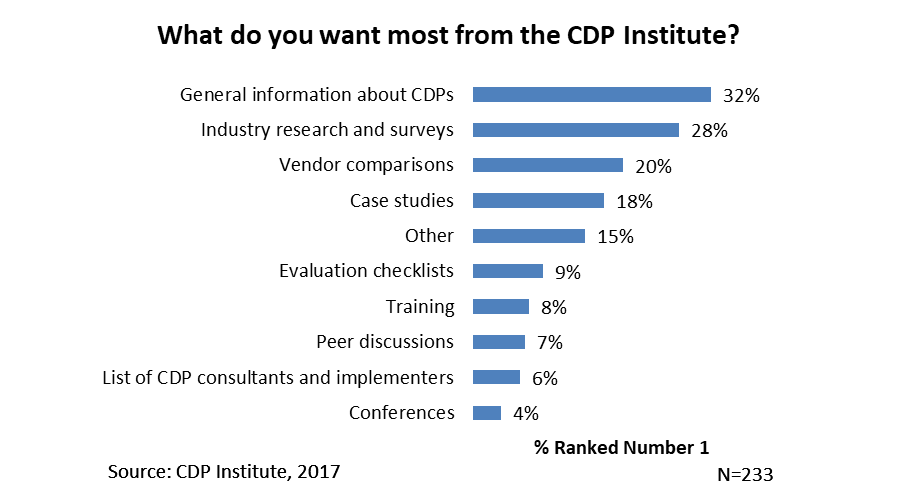CDP Industry Doubled in 2017: CDP Industry Update
January 2, 2018The CDP industry continued its strong growth in the second half of 2017, with new companies appearing from outside the U.S. and more products offering customer engagement features.
That’s the headline from the latest CDP Industry Update, the CDP Institute’s comprehensive analysis of CDP vendor growth and distribution. Compared with the first report, one year earlier, coverage has grown from 24 to 52 vendors. Some are brand new companies but most are existing firms that have repositioned as CDPs.
Companies outside the U.S. accounted for 35% of the vendor count, although just 29% of the employees, 19% of total funding and 12% of new funding, In other words, U.S. firms remain the heart of the industry even though their share is shrinking.
Similarly, CDPs with customer experience features such as personalization and campaign management have grown from 29% to 48% of the report, but firms offering just data assembly and analytics features account for 57% of employment, 72% of total funding, and 91% of new funding. Nearly all firms added to the list since the original report are in the customer experience category. (The report only includes CDPs, so firms in the customer experience category also provide data assembly and analytics.)
Total employment among listed firms more than doubled, from 2,000 to 4,400, as measured by LinkedIn. Employment at firms listed in the original report grew to 2,500, a 27% year-on-year increase. The balance of the growth was from firms added later. The lists of largest and fastest-growing individual firms were dominated by data assembly and analytics vendors, although customer experience firms showed some of highest percentage growth, starting from small bases.
In short, the report presents a vibrant industry that’s expanding both through organic growth at existing firms and by accruing new participants. If you’re looking for dramatic tension, there’s a conflict between the older, larger data assembly and analytics vendors and the newer, smaller customer experience products. The drama may be a bit artificial but it does point to a choice that marketers must make between using the CDP as a shared data source and using it to actively manage customer experience. Chances are both approaches will succeed, since different marketers will make different choices depending on their situations. But those who enjoy a good horse race should feel free to place their bets on which will emerge as the most common selection.
Download the full report here.


